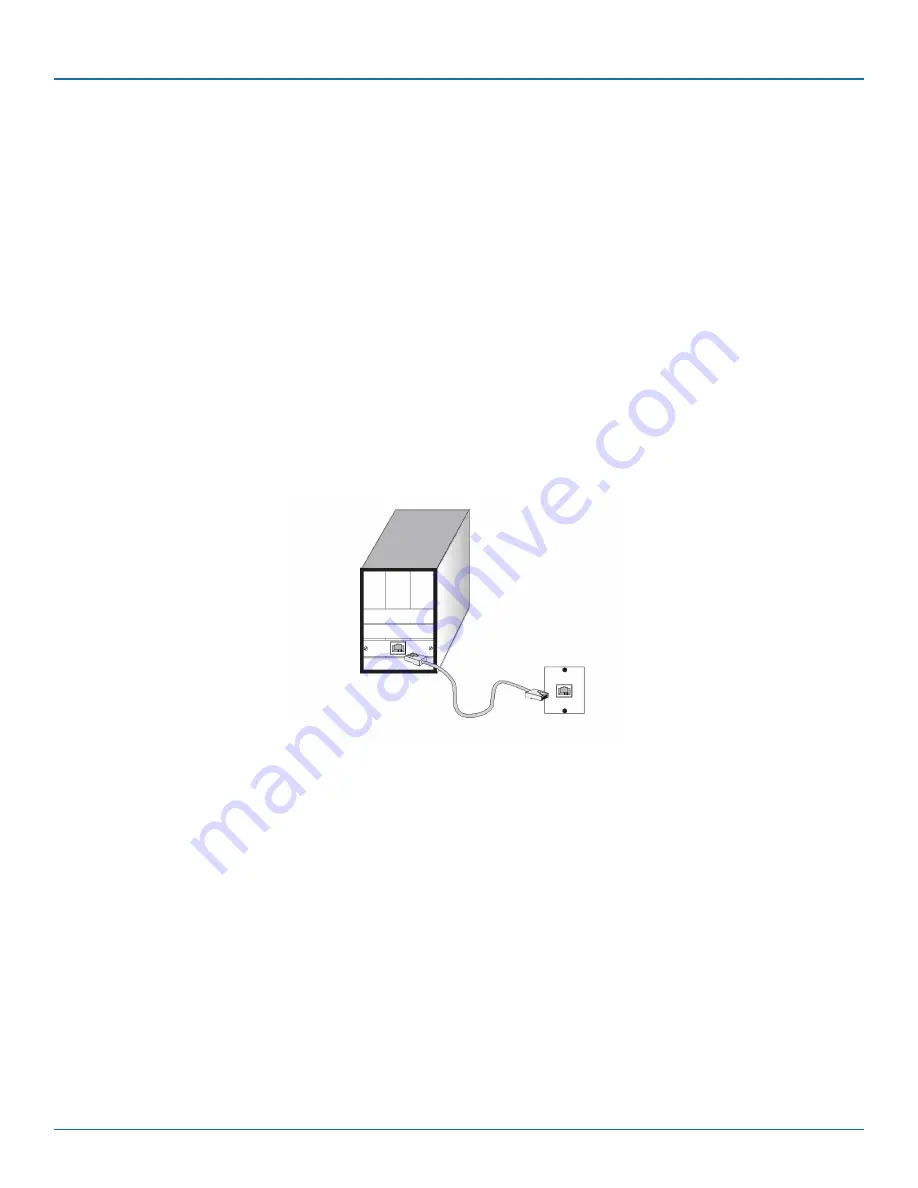
724-746-5500 | blackbox.com
Page 19
Chapter 3: Operation of Web-based Management
Connecting to Network Devices
The switch is designed to connect to 10-, 100-, or 1000-Mbps network cards in PCs and servers, as well as to other switches and
hubs. You can also connect it to remote devices using optional SFP transceivers.
Twisted-Pair Devices
Each device requires an unshielded twisted-pair (UTP) cable with RJ-45 connectors at both ends. Use Category 5, 5e, or 6 cable
for 1000BASE-T connections, and Category 5 or better for 100BASE-TX connections.
Cabling Guidelines
The RJ-45 ports on the switch support automatic MDI/MDI-X pin-out configuration, so you can use standard straight-through
twisted-pair cables to connect to any other network device (PCs, servers, switches, routers, or hubs).
See Appendix B for further information on cabling.
CAUTION: Do not plug a phone jack connector into an RJ-45 port. This will damage the switch. Use only twisted-pair cables with
RJ-45 connectors that conform to FCC standards.
3.2 Connecting to PCs, Servers, Hubs, and Switches
STEP 1: Attach one end of a twisted-pair cable segment to the device’s RJ-45 connector.
Figure 3-3. Making twisted-pair connections.
STEP 2: If the device is a network card and the switch is in the wiring closet, attach the other end of the cable segment to a
modular wall outlet that is connected to the wiring closet. (See the “Network Wiring Connections” section.) Otherwise, attach
the other end to an available port on the switch.
Make sure each twisted-pair cable does not exceed 328 feet (100 meters) in length.
NOTE: Avoid using flow control on a port connected to a hub unless it is actually required to solve a problem. Otherwise, back
pressure jamming signals may degrade overall performance for the segment attached to the hub.
STEP 3: As each connection is made, the Link LED (on the switch) corresponding to each port will light green (1000 Mbps) or
amber (100 Mbps) to indicate that the connection is valid.
3.3 Network Wiring Connections
Today, the punch-down block is an integral part of many of the newer equipment racks. It is actually part of the patch panel.
Instructions for making connections in the wiring closet with this type of equipment follow.
STEP 1: Attach one end of a patch cable to an available port on the switch, and the other end to the patch panel.
STEP 2: If not already in place, attach one end of a cable segment to the back of the patch panel where the punch-down block is
located, and the other end to a modular wall outlet.
Содержание LPB5028A
Страница 18: ...724 746 5500 blackbox com Page 18 Chapter 3 Operation of Web based Management Figure 3 2 Web help screen...
Страница 103: ...724 746 5500 blackbox com Page 103 Chapter 5 Configuration Figure 5 45 LLDP MED Configuration screen part 1...
Страница 104: ...724 746 5500 blackbox com Page 104 Chapter 5 Configuration Figure 5 46 LLDP MED Configuration screen part 2...
Страница 149: ...724 746 5500 blackbox com Page 149 Chapter 5 Configuration Figure 5 74 QoS Egress Port Schedules screen 1...
Страница 152: ...724 746 5500 blackbox com Page 152 Chapter 5 Configuration Figure 5 76 QoS Egress Port Shapers screen 1...
Страница 160: ...724 746 5500 blackbox com Page 160 Chapter 5 Configuration Figure 5 81 DSCP Translation Configuration screen...
Страница 241: ...724 746 5500 blackbox com Page 241 NOTES...
Страница 242: ...724 746 5500 blackbox com Page 242 NOTES...
Страница 243: ...724 746 5500 blackbox com Page 243 NOTES...
















































